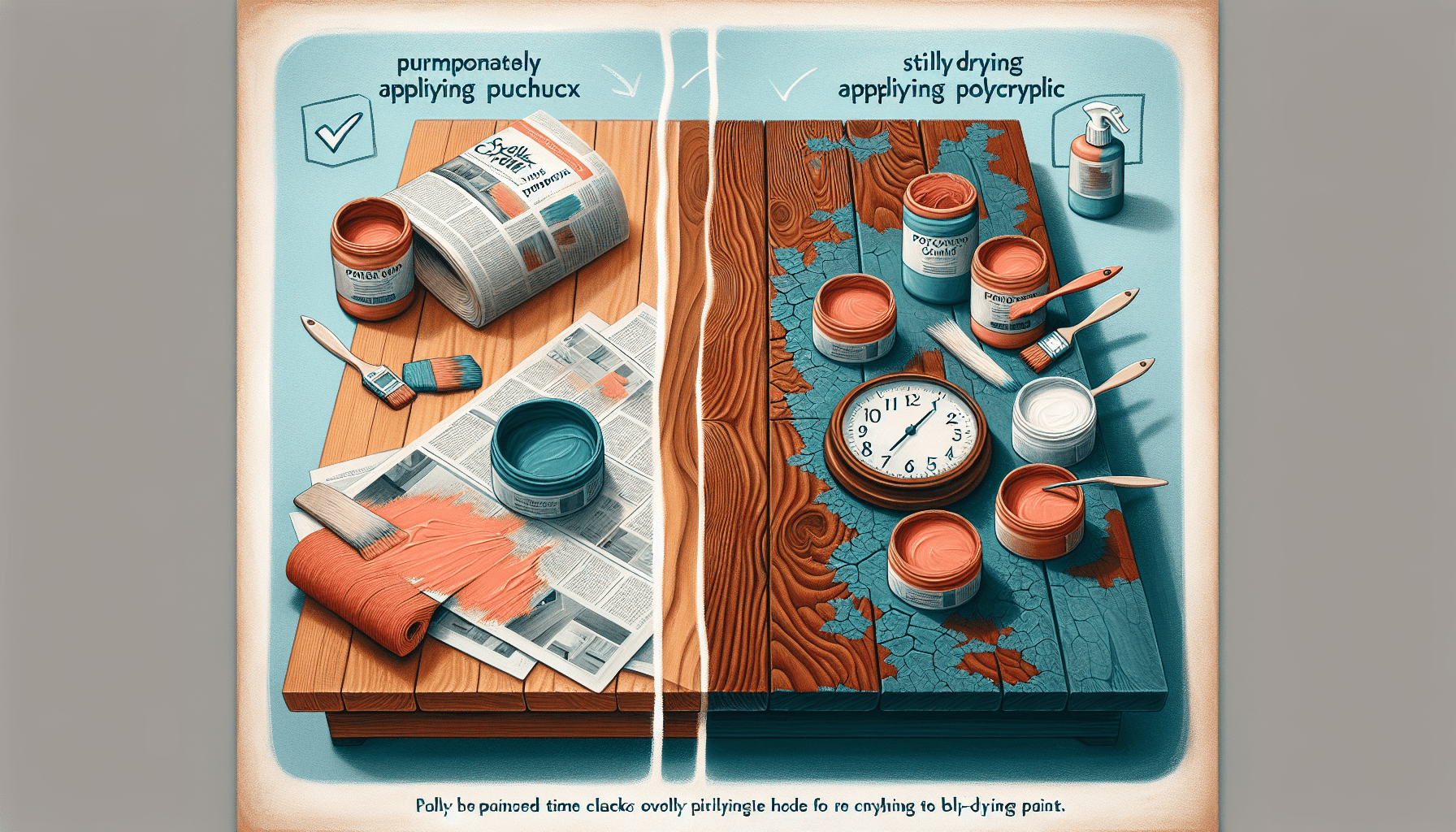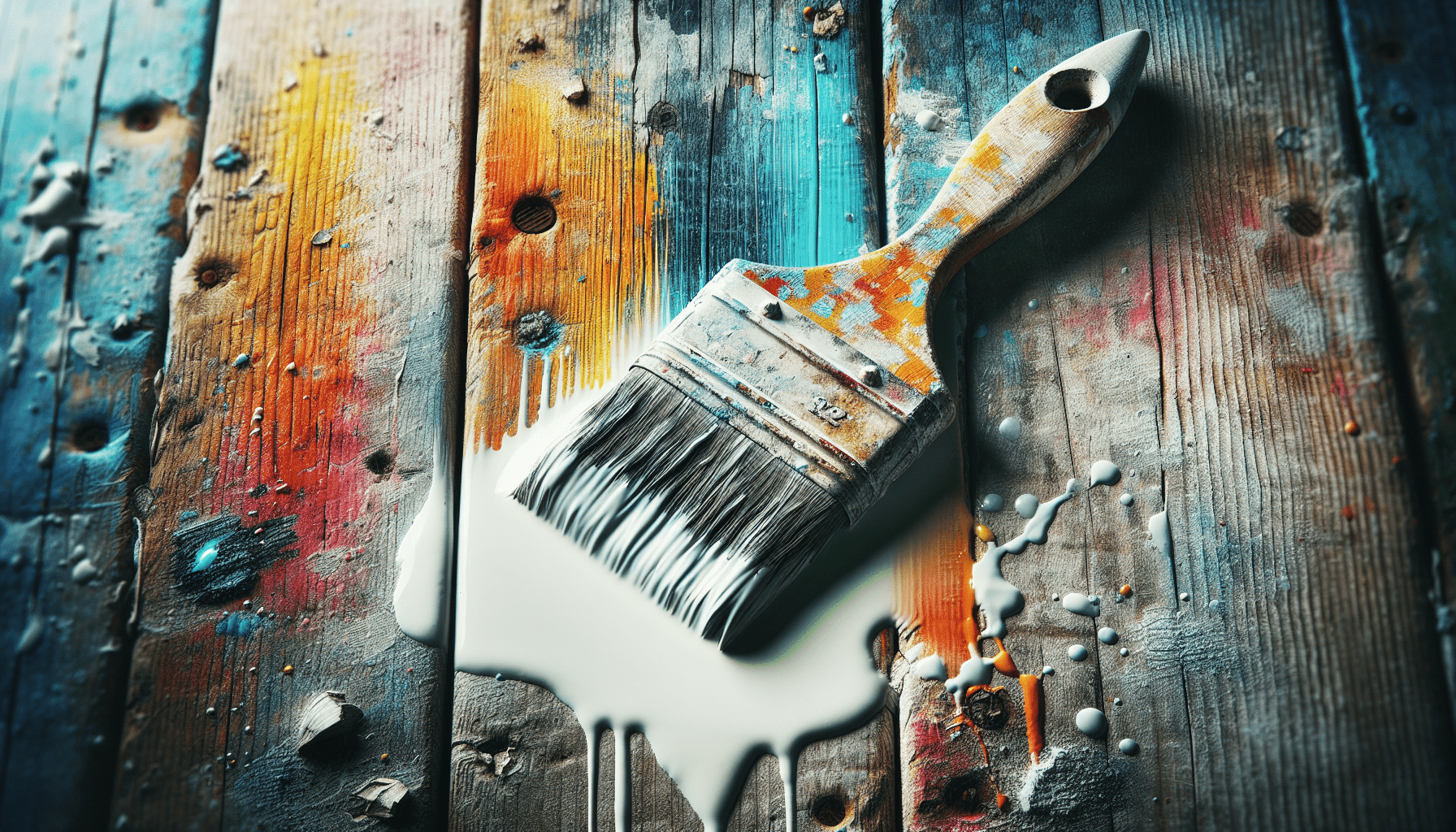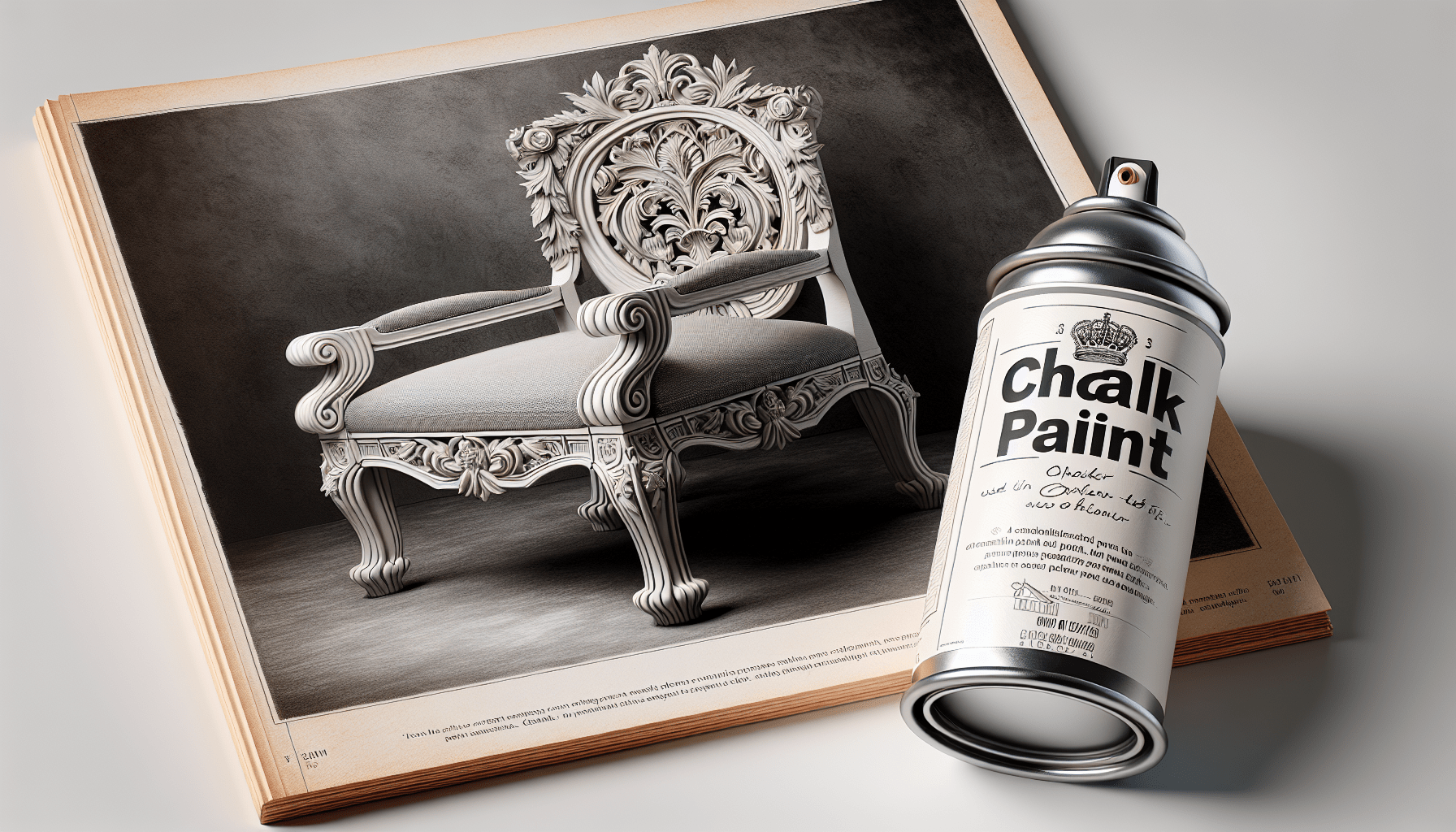In the realm of interior design and DIY projects, chalk paint has become a favored tool for transforming furniture and décor. However, completing the transformation requires a crucial next step: applying a protective coat of polycrylic. With its clear, durable finish, polycrylic provides both beauty and longevity to chalk-painted surfaces. But the question remains: how long should chalk paint dry before applying polycrylic? This article will explore the recommended drying time for chalk paint, ensuring that your next project is executed with precision and professionalism.
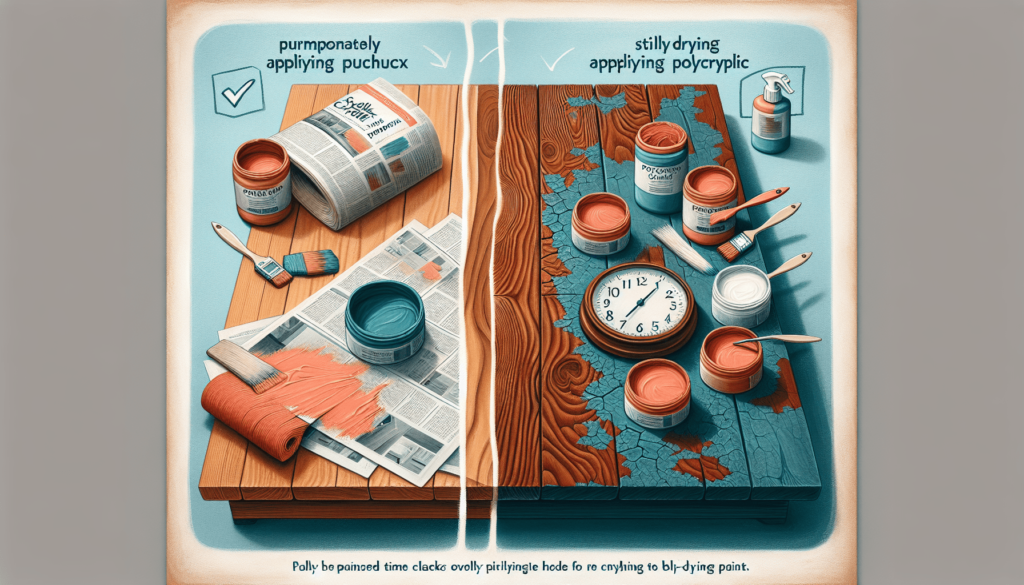
Why is the Drying Time Important?
Importance of allowing chalk paint to dry properly
Proper drying time is crucial when using chalk paint because it ensures that the paint adheres to the surface effectively and is fully cured. Allowing the paint to dry completely before applying any topcoat or sealant, such as polycrylic, is essential for achieving a durable and long-lasting finish. If the paint is not given sufficient time to dry, it may not bond properly, resulting in a less durable and easily damaged paint job.
Effect of not allowing chalk paint to fully dry
If chalk paint is not given enough time to dry, problems can arise. The most common issue is the paint not adhering to the surface properly, which can lead to peeling or chipping. Additionally, if polycrylic or any other topcoat is applied before the chalk paint is fully dry, it can trap moisture underneath, causing the paint to bubble or crack. Not allowing adequate drying time can also result in an uneven and streaky finish, ruining the overall appearance of the paint job.
Factors Affecting Chalk Paint Drying Time
Type of chalk paint used
Different brands and types of chalk paint may have varying drying times. Some chalk paints are specifically designed to dry faster, while others may take longer to fully cure. It is important to follow the manufacturer’s instructions and recommendations regarding drying time for the specific type of chalk paint being used.
Climate and humidity levels
The climate and humidity levels in your environment can greatly impact the drying time of chalk paint. In humid conditions, the paint will take longer to dry as the moisture in the air slows down the evaporation process. Conversely, in dry and arid conditions, the paint may dry more quickly. It is important to consider the weather and adjust the drying time accordingly.
Thickness of paint application
The thickness of the paint application can also affect the drying time. Thicker coats of paint will naturally take longer to dry compared to thin coats. Applying multiple thin coats instead of one thick coat not only helps the paint dry faster but also ensures better coverage and a smoother finish.
Porousness of the surface
The porousness of the surface being painted can influence the drying time as well. Highly porous surfaces, such as unfinished wood or bare metal, may absorb the moisture from the paint, causing it to dry more slowly. It is important to take into account the surface material and its level of porosity when estimating the drying time of chalk paint.
Drying Time for Chalk Paint
General drying time for chalk paint
The drying time for chalk paint can vary depending on the factors mentioned above. On average, chalk paint will be dry to the touch within 30-60 minutes. However, it is important to note that this is only the initial drying time, and the paint may not be fully cured or ready for additional coats or sealants.
Factors that may influence drying time
As discussed earlier, several factors can influence the drying time of chalk paint. The type of paint used, climate and humidity levels, thickness of application, and the surface’s porousness can all contribute to faster or slower drying times. It is essential to consider these factors and allow ample drying time before moving on to the next steps in the painting process.
Understanding Polycrylic
What is polycrylic?
Polycrylic is a water-based protective finish that is commonly used to seal and protect painted surfaces. It provides a clear and durable topcoat that helps to protect the paint from wear, moisture, and UV damage. Polycrylic is available in both brush-on and spray-on forms, making it versatile and easy to apply.
Advantages of using polycrylic
There are several advantages to using polycrylic as a topcoat for chalk paint. Firstly, it provides excellent protection against scratches, stains, and general wear. Polycrylic also adds a glossy or satin sheen to the painted surface, enhancing its appearance. Additionally, polycrylic is quick-drying, which means it won’t significantly extend the overall drying time of the paint job.
How polycrylic affects the chalk paint finish
When polycrylic is applied to dried chalk paint, it forms a protective barrier over the paint, increasing its resistance to damage and extending its lifespan. Polycrylic can enhance the color and finish of the chalk paint, making it appear more vibrant and polished. It is important to apply polycrylic only after the chalk paint has fully dried to avoid any issues with adhesion or finish quality.
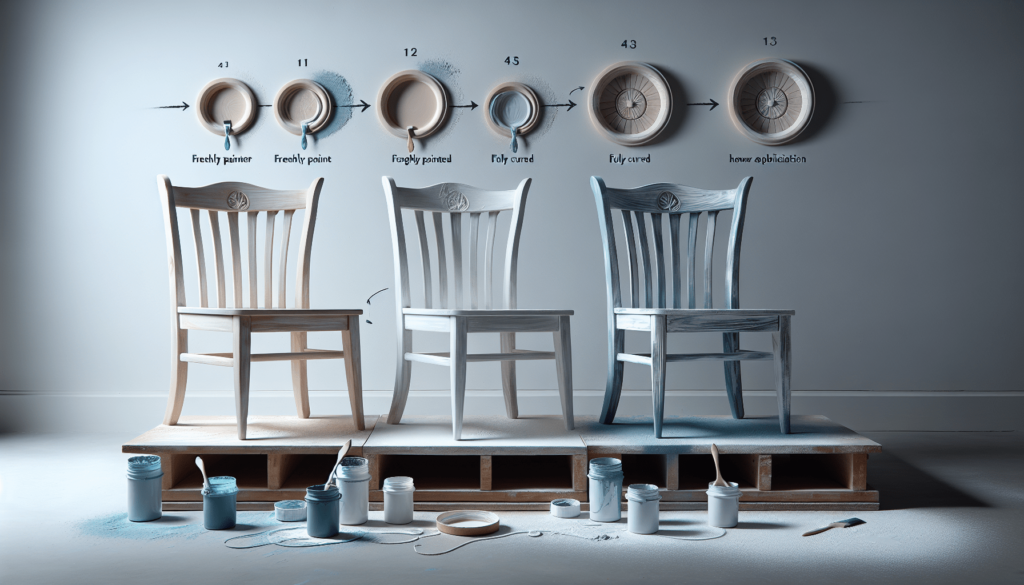
Recommended Drying Time for Chalk Paint Before Applying Polycrylic
Advice from experts
Experts recommend waiting at least 24 hours before applying polycrylic over chalk paint. This ensures that the chalk paint has enough time to fully cure and bond to the surface. Waiting longer, such as 48 hours or more, may be necessary in humid or colder conditions.
Minimum recommended drying time
While waiting at least 24 hours is generally considered the minimum recommended drying time, it is crucial to assess the dryness of the paint by performing a touch test or using other methods to ensure that it is completely dry before proceeding with the application of polycrylic.
Ideal drying time for best results
To achieve the best results and ensure optimal adhesion and finish, it is advisable to wait 48 to 72 hours before applying polycrylic over chalk paint. This extended drying time allows the paint to fully cure and harden, reducing the risk of any issues with the polycrylic application and long-term durability.
Tips for Ensuring Proper Drying of Chalk Paint
Applying thin coats of chalk paint
To facilitate quicker drying time, it is recommended to apply thin coats of chalk paint rather than one thick coat. Thin coats not only dry faster but also provide better coverage and a smoother finish. Repeat the process of thin coats until the desired opacity is achieved.
Allowing sufficient drying time between coats
To avoid issues with adhesion and finish quality, it is essential to allow sufficient drying time between coats of chalk paint. This may vary depending on the specific paint product being used, but a general guideline is to wait at least 1-2 hours between coats. Assess the dryness of the paint before proceeding with subsequent coats.
Proper ventilation and air circulation
Proper ventilation and air circulation can help expedite the drying process. Ensure that the painting area is well-ventilated by opening windows or using fans to provide airflow. This helps the paint dry faster by increasing the evaporation of moisture from the paint and reducing humidity levels in the immediate environment.
Avoiding excessive moisture or humidity
Excessive moisture or high humidity levels can significantly extend the drying time of chalk paint. It is important to avoid painting in humid or damp conditions, as this can lead to prolonged drying times and potential issues with the paint adhering properly. Choose a dry and well-ventilated area for painting to ensure optimal drying conditions.
Testing the Dryness of Chalk Paint
Methods to check if the chalk paint is dry
Several methods can be used to determine if chalk paint is dry. One common method is the touch test, where you lightly touch the painted surface with your fingertips. If the paint feels dry to the touch, without any tackiness or smudging, it is likely dry. Additionally, observing the paint’s appearance and texture can provide insights into its dryness.
Visual cues to look for in dry chalk paint
Dry chalk paint should have a consistent and uniform appearance without any visible glossiness or sheen. It should appear matte or flat, depending on the desired finish. The paint should also have a smooth and non-sticky texture, indicating that it has dried and cured properly.
Risks of Applying Polycrylic Too Early
Effects of applying polycrylic prematurely
Applying polycrylic before the chalk paint has fully dried can result in various issues. Firstly, the moisture trapped under the polycrylic can cause the paint to bubble or crack, compromising the integrity of the finish. Additionally, the polycrylic may not adhere properly to the still-drying paint, leading to poor adhesion and potential peeling or flaking.
Potential damage to the paint finish
If polycrylic is applied too early, it can disrupt the drying process of the chalk paint. This can result in an uneven or streaky finish, making the painted surface appear unprofessional or imperfect. Premature application of polycrylic can also make it difficult to achieve a smooth and flawless final result.
Alternative Finishing Options for Wet or Fresh Chalk Paint
Wax as a temporary sealant
If you’re in a hurry or don’t have enough drying time for chalk paint, using wax as a temporary sealant is a viable option. Wax provides a protective layer over the paint, preventing damage while the paint continues to dry. However, it is important to note that wax is not as durable as polycrylic and may require reapplication over time.
Water-based polyurethane for quick drying
Water-based polyurethane is another alternative for sealing wet or fresh chalk paint. It dries relatively quickly and provides a durable and robust finish. However, it is crucial to ensure that the paint has dried sufficiently to avoid any issues with adhesion or finish quality.
Acrylic spray sealant for touch-ups
For touch-ups or small areas that require immediate sealing, acrylic spray sealant can be used. This spray-on product dries quickly and provides a protective coat over the paint. It is important to follow the manufacturer’s instructions and recommendations for proper application and drying time.
Frequently Asked Questions
Can I speed up the drying time of chalk paint?
While you cannot drastically speed up the drying time of chalk paint, certain measures can help expedite the process. These include applying thin coats, ensuring proper ventilation and airflow, and avoiding excessively humid conditions. However, it is important to allow sufficient drying time to ensure a durable and long-lasting finish.
What happens if I apply polycrylic too early?
If polycrylic is applied too early, it can trap moisture underneath and cause the paint to bubble or crack. Premature application can also result in poor adhesion and a streaky finish. It is crucial to follow the recommended drying time for chalk paint before applying any topcoat or sealant.
Can I apply polycrylic over wax?
Yes, polycrylic can be applied over wax. However, it is important to note that the wax should be fully dry and cured before applying polycrylic. Testing the dryness of the wax is crucial to ensure that it does not interfere with the adhesion or finish of the polycrylic.
How long does polycrylic take to dry?
The drying time of polycrylic can vary depending on factors such as temperature, humidity, and thickness of application. On average, polycrylic will be dry to the touch within 2-4 hours. However, it is important to allow an additional 24 hours for the polycrylic to fully cure and provide optimal protection.
In conclusion, proper drying time is paramount when working with chalk paint. Allowing the paint to dry completely before applying polycrylic ensures a durable and long-lasting finish. Factors such as the type of chalk paint, climate, thickness of application, and surface porosity can all affect drying time. It is important to follow the recommended drying time for chalk paint and to use polycrylic as a topcoat only when the paint has fully dried. By adhering to these guidelines and utilizing alternative finishing options when necessary, you can achieve a professional and flawless chalk paint finish.
